Travelling in 2024 offers new heights of luxury and convenience, thanks in no small part to the world’s leading airports. According to Skytrax, these ten airports aren’t just stopovers; they are integral parts of the journey, enhancing the travel experience with their outstanding facilities, innovative technologies and exceptional customer service. Let’s embark on a detailed tour through these terminals, each a gateway to the wonders of its city and beyond, setting global standards that transform layovers into highlights.
10. Istanbul Airport (IST)

Istanbul Airport, a cornerstone of travel between Europe and Asia, has rapidly become one of the world’s busiest hubs. This airport isn’t just about size; it’s about an experience steeped in the rich heritage of Turkey. The design reflects the grandeur of Istanbul with its palatial ambience and sophisticated architectural cues. It boasts one of the largest duty-free shopping complexes in the world, spanning over 53,000 square meters, offering everything from luxury brands to unique local artefacts.
For gastronomy enthusiasts, the airport provides a taste of Turkish delight—literally—with eateries offering everything from baklava to sumptuous kebabs. On the technological front, Istanbul Airport leads with a fully automated check-in system, reducing wait times significantly, and facial recognition software that speeds up security processes.
9. Zurich Airport (ZRH)
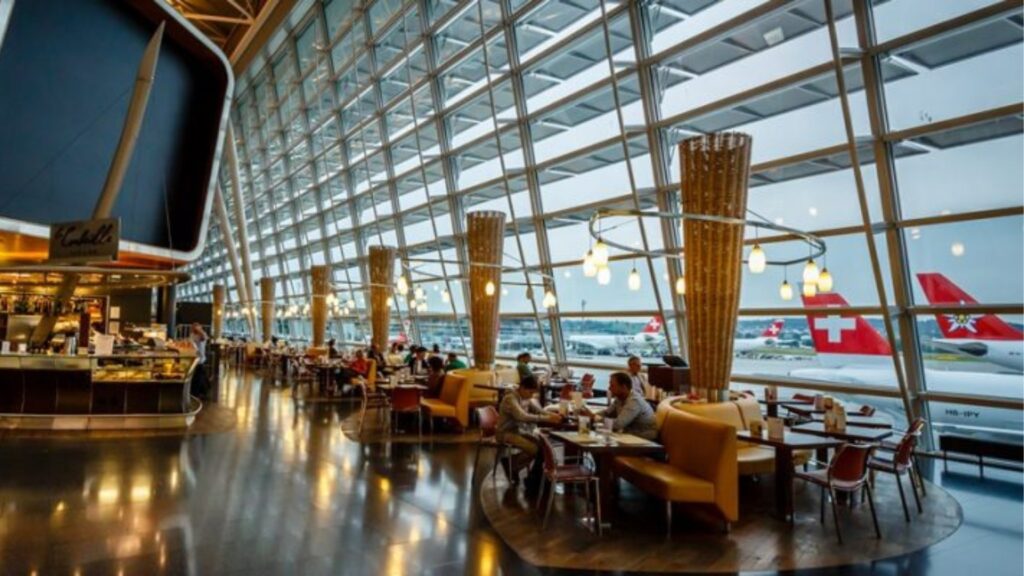
Zurich Airport, known for its efficiency, offers a traveller experience that mirrors the precision of Swiss watches. It’s not just the quick security checks or the immaculately clean facilities that impress, but also its commitment to sustainable travel, with numerous initiatives aimed at reducing environmental impact. The airport’s layout is designed for ease of navigation, significantly lowering transit times between gates.
Its observation deck not only provides stunning views of the Swiss machinery at work on the tarmac but also offers a front-row seat to the majestic Alps. The integration of fine Swiss dining and luxury shopping with local products, such as the famous Swiss chocolate and watches, adds a local flavour to global travel.
8. Munich Airport (MUC)
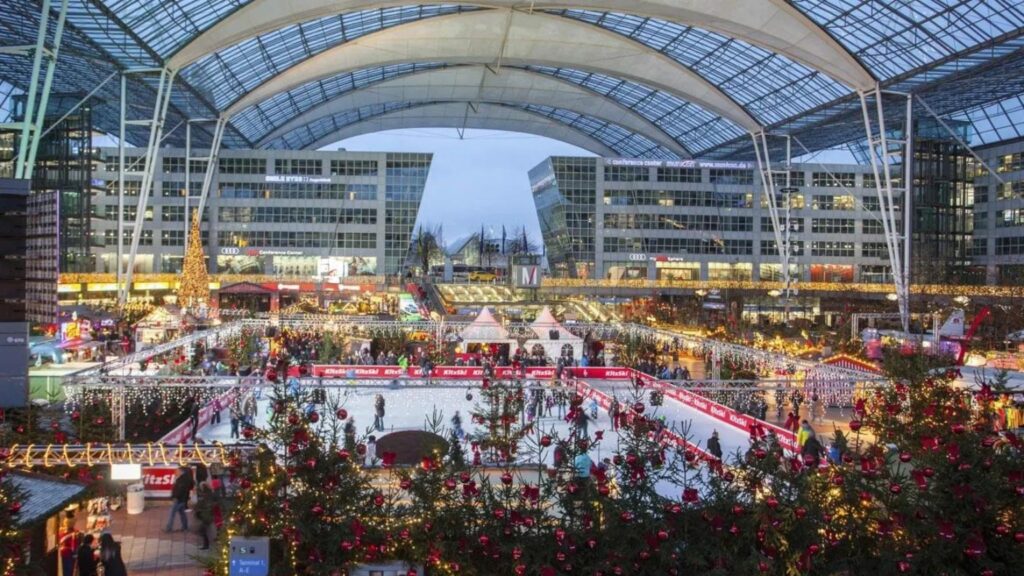
More than a mere transit hub, Munich Airport is a cultural festival with events year-round, from the Christmas markets complete with ice skating to summer surfing on an artificial wave. This dual-terminal airport excels in providing cultural experiences that reflect Bavaria’s rich traditions alongside modern German efficiency. With facilities like the Munich Airport Center, it blends shopping, dining, and entertainment seamlessly.
For tech enthusiasts, the airport offers interactive kiosks and a high-speed Wi-Fi network that covers the entire airport, ensuring travellers are always connected. The airport also boasts Europe’s first and only airport brewery—Airbräu—where travellers can enjoy freshly brewed beer and traditional Bavarian meals.
7. Dubai International Airport (DXB)
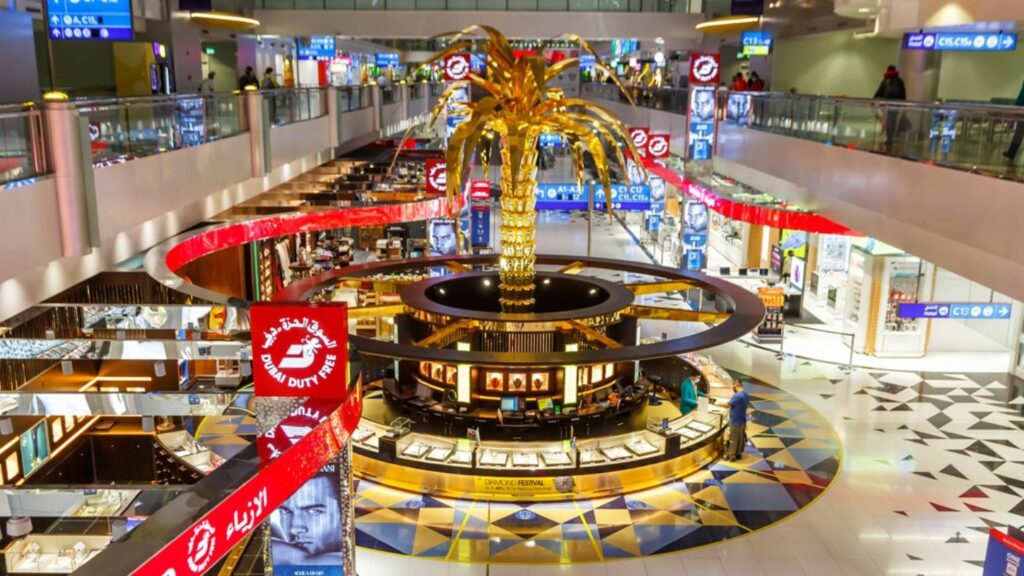
Dubai International Airport reflects the city’s iconic luxury and high-tech facilities. As one of the largest airports in the world, it caters to over 88 million passengers a year, with amenities that rival those of a small city. The airport features three terminals connected by an automated People Mover, with Terminal 3 dedicated exclusively to Emirates Airlines, showcasing the opulence with gold-plated walls and designer lounges.
The extensive retail space includes high-end brands like Chanel and Gucci, alongside vast dining options that offer both international and Middle Eastern cuisines. For relaxation, the airport provides quiet zones with reclining lounges and dedicated sleep pods.
6. Paris Charles de Gaulle Airport (CDG)
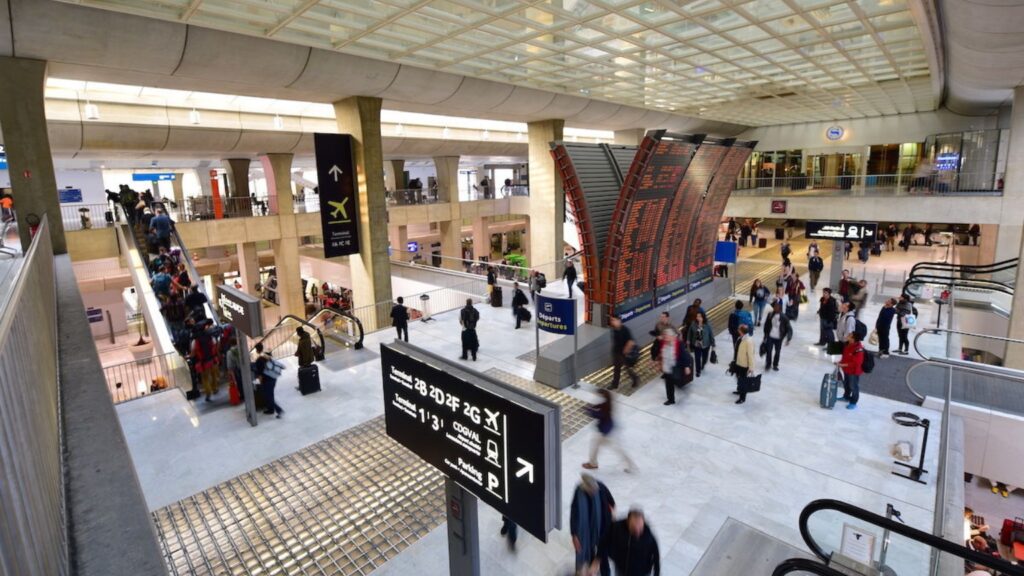
Paris CDG has transformed itself into a paragon of airport experiences, emphasizing customer service and operational efficiency. The recent renovation of Terminal 1 has introduced an intuitive layout that guides passengers through the light-filled, art-adorned spaces, making navigations as delightful as they are efficient. Cultural exhibitions rotate regularly, reflecting Paris’s status as a global art hub.
Gastronomically, the airport offers a taste of Paris with cafes and restaurants serving everything from haute cuisine to rustic French staples. Technology-wise, CDG has invested heavily in biometric security processes and boasts one of the quickest baggage handling times in Europe.
5. Tokyo Narita Airport (NRT)
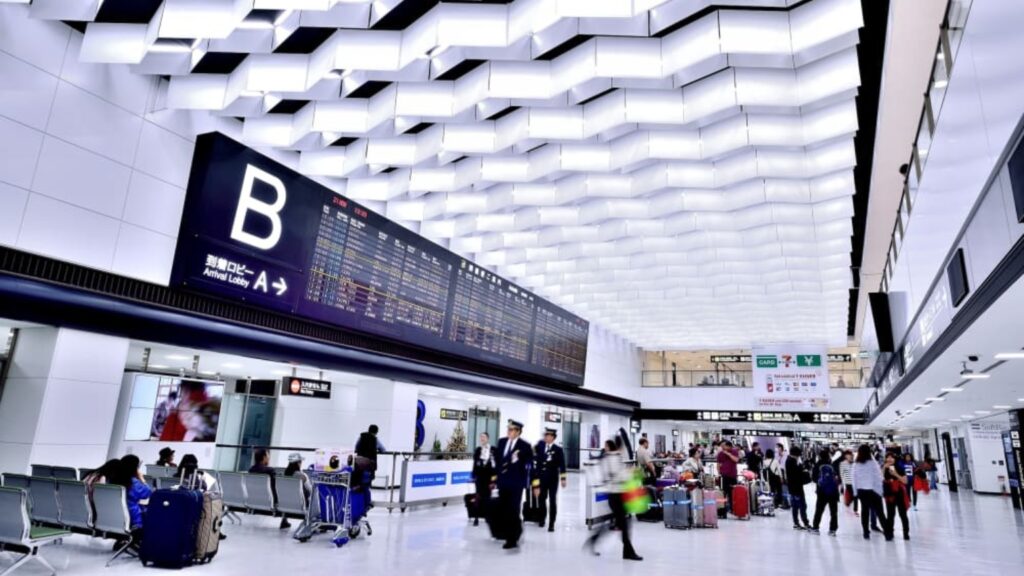
Tokyo Narita, Japan’s doorway to the world, excels in blending traditional Japanese hospitality with cutting-edge technology. The airport’s cleanliness and organization are legendary, creating a serene atmosphere amid the bustle of international travel. Cultural offerings such as live Kabuki performances and a sprawling sushi mall provide travellers with a deep dive into Japanese culture.
For those interested in tranquillity, the airport’s zen gardens offer a peaceful escape. Advanced robotics and AI are employed to ensure smooth operations, from security checks to baggage handling, enhancing the efficiency that Narita is known for.
4. Tokyo Haneda Airport (HND)
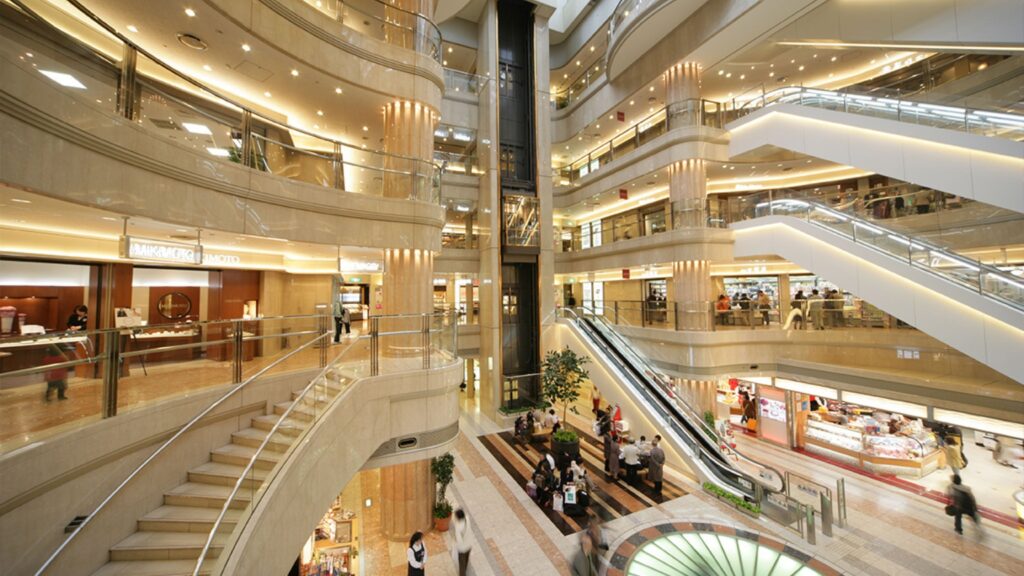
Haneda Airport, closer to Tokyo’s city centre than Narita, is preferred by travellers looking to maximize their time in Japan. It ranks at the top for passenger satisfaction in terms of sleep quality and layover experience. The airport features traditional Japanese architecture and has a large shopping area, Tokyo Pop Town, which offers a wide range of anime and manga merchandise that appeals to both new fans and seasoned collectors. Haneda’s commitment to punctuality is unmatched, consistently recording on-time departure and arrival rates that are among the highest in the world.
3. Seoul Incheon International Airport (ICN)
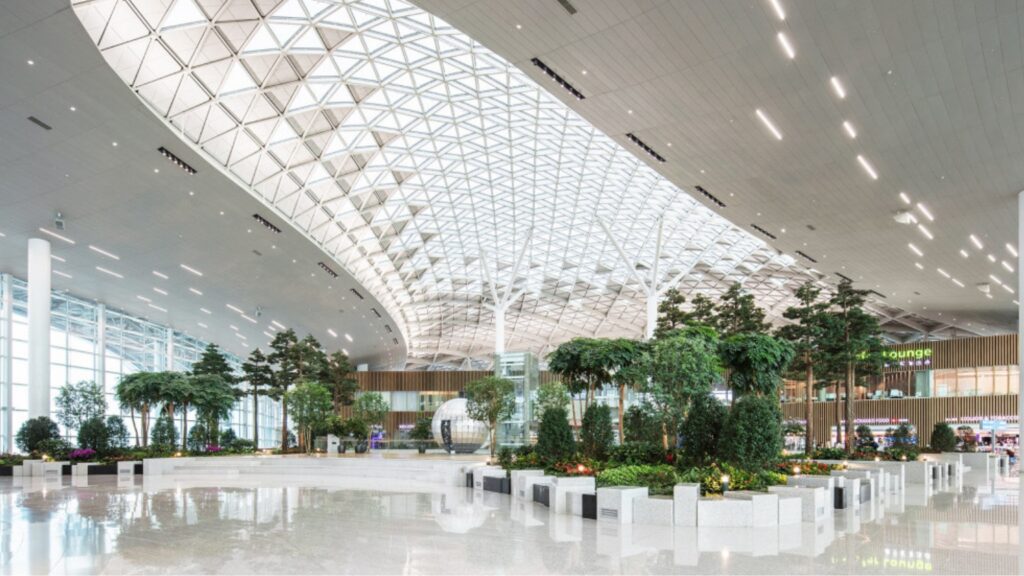
Seoul’s Incheon International Airport continues to set benchmarks for the global travel industry. The airport is renowned for its speedy visa checks, often clearing passengers in just 19 minutes and luggage delivery times that average only 12 minutes. The cultural offerings are robust, including a museum of Korean culture and daily dance and music performances in the terminals.
For relaxation, travellers can visit the airport’s spa or take a stroll through its indoor gardens. Additionally, Incheon’s air traffic control features some of the most advanced automation systems, which significantly reduce the risk of delays and enhance overall safety.
2. Singapore Changi Airport (SIN)
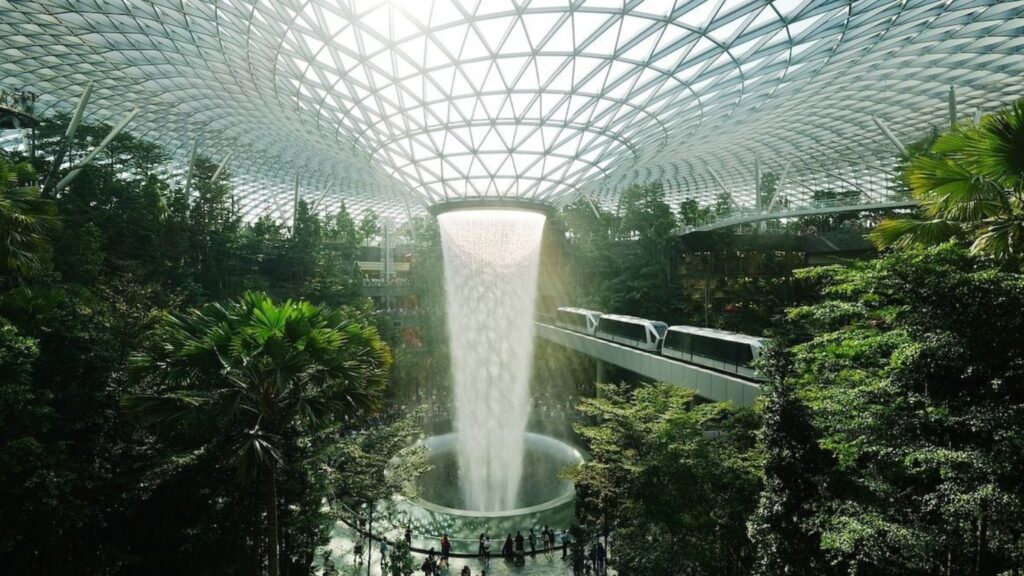
Singapore Changi isn’t just an airport; it’s an attraction in its own right. The Jewel, a nature-themed entertainment and retail complex, links three of its terminals and features the world’s tallest indoor waterfall, the Rain Vortex, surrounded by a forest setting. Changi’s efficiency is also noteworthy; despite its size, it manages to deliver exceptional service with short waiting times and quick baggage services.
The airport offers free city tours for transiting passengers, a unique feature that allows travellers to get a glimpse of Singapore during longer layovers.
1. Doha Hamad International Airport (DOH)
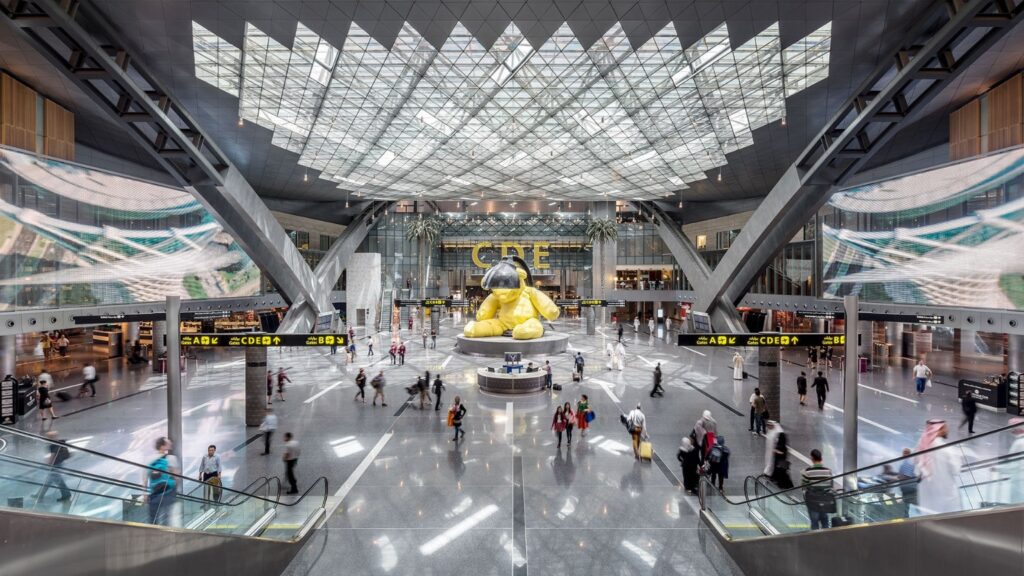
At the pinnacle of airport luxury, Doha’s Hamad International Airport exemplifies the fusion of cultural heritage with modern design. Its expansive lounges offer more than just comfort—they provide a cultural immersion with art installations and design elements inspired by the desert landscape and local artisanship. The airport is also a hub for Qatar Airways, one of the world’s leading airlines, and features two runways that can accommodate the Airbus A380, making it a critical player in international travel. The attention to passenger experiences is meticulous, from the swift security screenings to the interactive art exhibits that engage travellers.
Conclusion
These airports are more than mere transit points; they are essential parts of the global travel experience, designed to offer comfort, efficiency, and a taste of local and international culture. They demonstrate how infrastructure can be transformed into art and service into an experience, ensuring that the journey starts as soon as one enters the terminal. As we look forward to future travels, these airports set the standards high, proving that the sky is not the limit when it comes to redefining what an airport can be.




